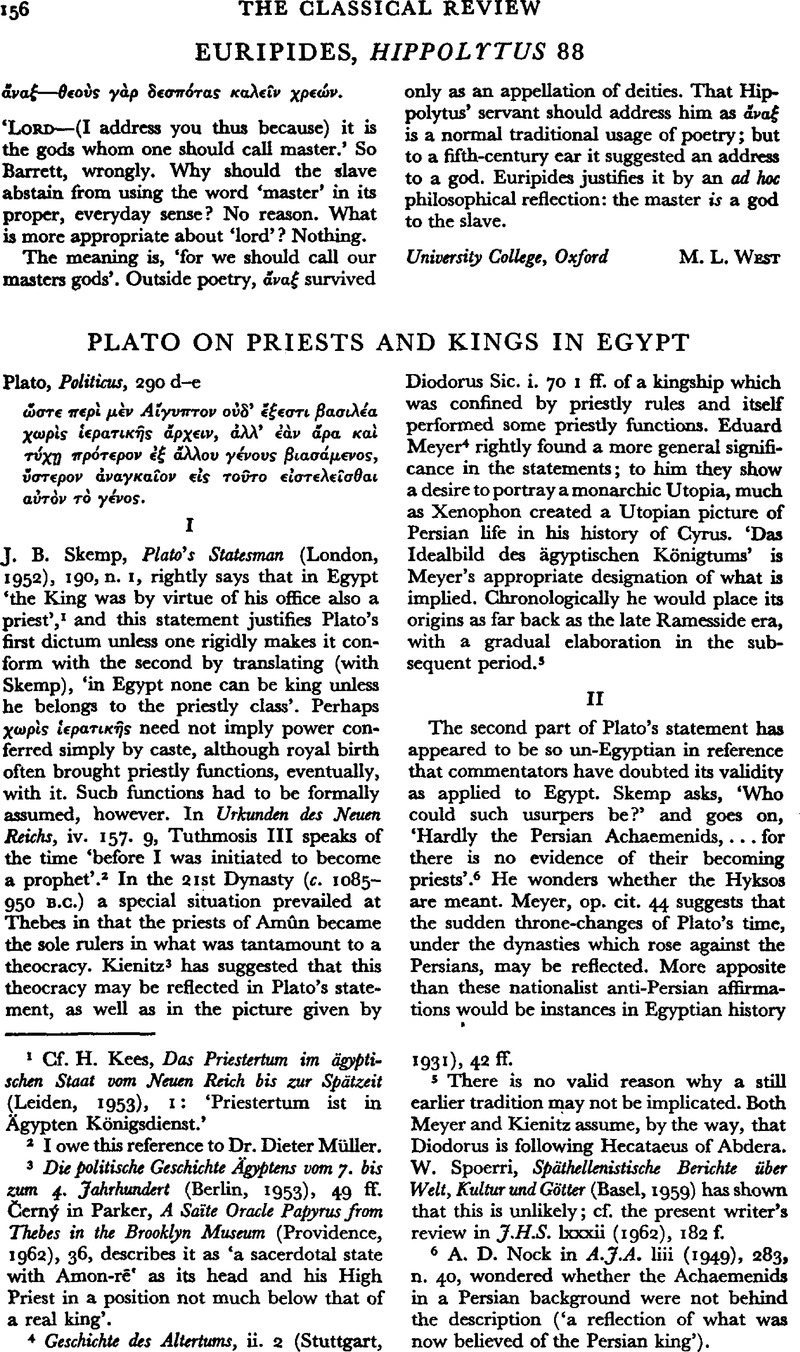Article contents
Plato on Priests and Kings in Egypt
Published online by Cambridge University Press: 27 February 2009
Abstract

- Type
- Review Article
- Information
- Copyright
- Copyright © The Classical Association 1965
References
1 Cf. H. Kees, Das Priestertum im ägyptischen Stoat vom Neuen Reich bis zur Spätzeit (Leiden, 1953), 1: ‘Priestertum ist in Ägypten Königsdienst.’
2 I owe this reference to Dr. Dieter Müller.
3 Die politische Geschichte Ägyptens vom 7. bis zum 4. Jahrhundert (Berlin, 1953), 49 ff. Ĉerný in Parker, A Säite Oracle Papyrus from Thebes in the Brooklyn Museum (Providence, 1962), 36, describes it as ‘a sacerdotal state with Amon-re' as its head and his High Priest in a position not much below that of a real king’.
4 Geschichte des Altertums, ii. a (Stuttgart, 1931), 42 ff.
5 There is no valid reason why a still earlier tradition may not be implicated. Both Meyer and Kienitz assume, by the way, that Diodorus is following Hecataeus of Abdera. W. Spoerri, Spathellenistische Berichte über Welt, Kultur und Götter (Basel, 1959) has shown that this is unlikely; cf. the present writer's review in J.H.S. lxxxii (1962), 182 f.
6 A. D. Nock in A.J.A. liii (1949), 283, n. 40, wondered whether the Achaemenids in a Persian background were not behind the description (‘a reflection of what was now believed of the Persian king’).
- 1
- Cited by


